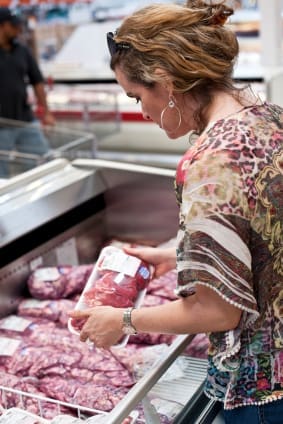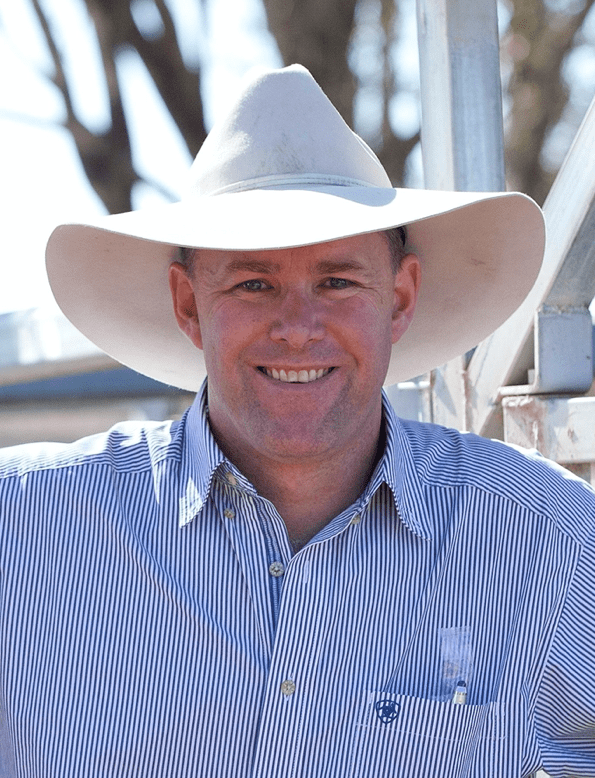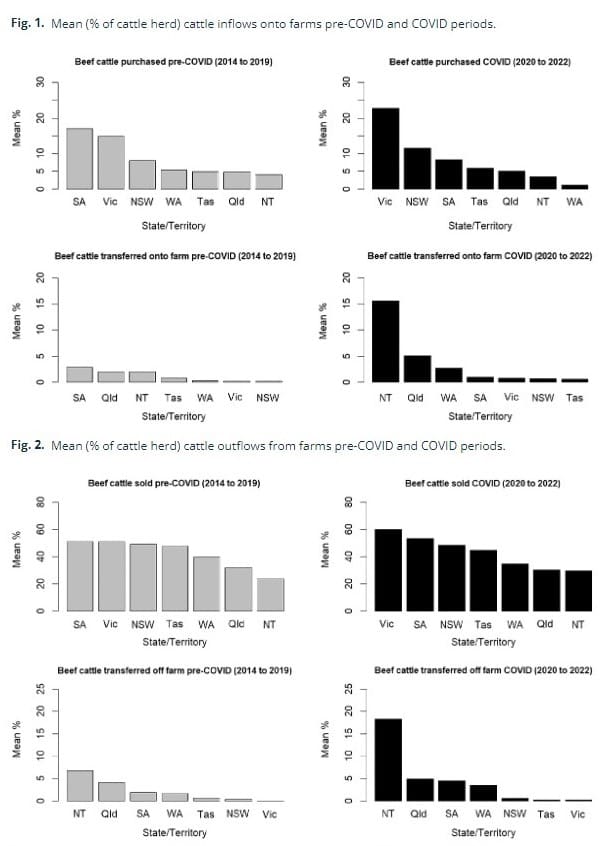The COVID-19 pandemic in 2019-21 caused widespread disruptions across many industry sectors globally, and Australia’s beef industry was no exception.
Despite agriculture being designated as an essential service, beef producers faced multiple challenges, including supply chain disruptions, dramatic declines in food service demand, and rising prices.
 A report written by Joshua Aboah and others published recently in the CSIRO Journal of Animal Production Science focusses on the outcomes and impacts of the pandemic on Australia’s beef producers, with a particular emphasis on regional variations, cattle prices, and the overall resilience of the supply chain.
A report written by Joshua Aboah and others published recently in the CSIRO Journal of Animal Production Science focusses on the outcomes and impacts of the pandemic on Australia’s beef producers, with a particular emphasis on regional variations, cattle prices, and the overall resilience of the supply chain.
The study used annual data on beef cattle sold, purchased, transferred off-farm and transferred onto farms sourced from the database of the Australian Bureau of Agricultural and Resource Economics and Sciences, plus MLA database information.
The calendar years between 2014 and 2019 were regarded for the purposes of the study as the pre-COVID period, and the COVID period was 2020 to 2022.
Impacts on beef producers
One of the key findings of the study was that nationwide beef cattle trade remained relatively stable during the COVID pandemic.
There were no significant changes in the proportion of cattle sold across Australia, however regional differences were noted. In Tasmania and New South Wales, cattle purchases increased by 1.4pc and 3.6pc, respectively. Western Australia, on the other hand, saw a 3.8pc decline in cattle purchases, particularly in the WA Central and Southern Wheat Belt and WA Southwest Coastal regions.
For beef producers, this indicates that while market demand remained strong in some regions, others saw a downturn in trading activity. Producers in regions with declining purchases had to adapt to reduced demand, potentially facing more challenges in managing cattle sales and movement.
Beef producers experienced a significant rise in cattle prices during the COVID pandemic. Processor cattle prices increased across different weight categories, with light cattle less than 200kg seeing an 11.3pc price rise, the 280–330 kg category experiencing a 7.4pc rise, and the 330-400kg category rising by 12.9pc.
These price increases reflected higher demand at the processing level, despite disruptions in parts of the supply chain.
At the retail level, beef prices surged by 29pc nationwide. For producers, this was a positive outcome as they were able to command higher prices for their cattle.
However, the increase in prices also reflected significant disruptions downstream, particularly in processing and slaughtering activities, which led to supply shortages.
Processing impacts
One of the major bottlenecks during the pandemic was in cattle slaughtering. While farm-level trade remained stable, a substantial decrease in cattle slaughter across the country was recorded. This affected the entire supply chain, reducing the availability of beef and contributing to price inflation at both the processor and retail levels, the report said.
Beef producers were indirectly affected by these disruptions. Although they benefited from rising cattle prices, they also faced potential delays in moving cattle to slaughter, affecting their ability to meet the higher demand consistently.
The surge in cattle prices was largely driven by changes in consumer behaviour during the pandemic. Panic buying and increased demand for red meat put pressure on the supply chain. Additionally, labour shortages at processing plants and abattoirs created further supply constraints, driving prices upward.
For beef producers, the increased demand and price surge created opportunities to sell cattle at higher prices. However, the labour shortages and processing delays meant that not all producers could fully capitalise on the demand spike, with some likely facing delays in getting their cattle processed.
Regional Variations in Cattle Movement
The Northern Territory, which has the nation’s largest average farm herd size, saw increased cattle movements and trade during the pandemic. Notably, the NTy did not implement lockdown measures, allowing the flow of cattle to continue relatively uninterrupted.
In contrast, Victoria, which faced the longest lockdown, experienced decreases in cattle transfers both onto and off farms. Despite these challenges, Victoria’s cattle sales and purchases increased during the pandemic, highlighting the region’s capacity to adapt to shifting market conditions.
For beef producers in regions like the Northern Territory, the pandemic had less of an impact on daily operations, and they were able to continue trading cattle. In areas with stricter lockdowns, such as Victoria, producers had to navigate disruptions in cattle movements but were still able to capitalize on increased sales.
Another measure implemented during the COVID period was the demarcation of biosecurity bubbles – controlled zones designated to prevent the entry and spread of potential diseases (in this case COVID). According to Steele et al. (2021), the implementation of biosecurity bubbles and the facilitation of free movement for animal transport workers ensured the prompt transfer of animals to abattoirs.
In addition, the use of online bidding as an alternative to saleyard activities by livestock industry representatives and the extension of visas for agricultural workers during the COVID period may have contributed to the normalcy of trading activities.
In response to increased retail prices, consumers’ purchasing behaviour changed during the COVID period, with reports of food insecurity and increased purchases of unhealthy foods (Grieger et al. 2022). Vo et al. (2023) further highlighted significant short-term disruptions in consumption behaviour during the COVID period, followed by a return to pre-COVID levels when restrictions were lifted. When increasing consumer demand puts pressure on supply from the production sector, the price increases and triggers a change in the supply patterns. Thus, the demand and price dynamics may have posed a moderating effect on farm-level beef cattle trade decisions, the report said.
The Australian government’s containment of the COVID-19 pandemic via the lockdown, border closure, and social distance restrictions resulted in the unintended consequence of labour shortages, which in turn impacted the labour cost. The findings of this study corroborate the reported increase in the price of lean meat during the COVID period (Lee et al. 2021) due to increased demand. Hence, the increased demand was somewhat desirable from the processor and retailer perspectives.
Resilience of the Supply Chain
The resilience of Australia’s beef supply chain was a significant outcome of the pandemic. Despite initial concerns, the beef industry remained largely stable at the farm level.
Key policies, such as the creation of biosecurity bubbles and the facilitation of transport for animal workers, helped ensure that cattle movements continued, and farm operations were maintained.
For beef producers, these policies were essential in preventing major disruptions, the report said. The government’s support measures allowed producers to keep operating, albeit with some adjustments, helping them navigate the challenges posed by the pandemic.
Overall, the COVID pandemic had mixed outcomes for beef producers in Australia.
While supply chain disruptions created challenges, particularly in processing and slaughtering, the surge in cattle prices provided opportunities for higher revenues.
Regional differences in cattle movements and trade reflected the varying impacts of restrictions and lockdowns, but overall, the industry demonstrated resilience. The pandemic highlighted the importance of policies aimed at maintaining supply chain continuity, which allowed Australia’s beef producers to adapt and thrive despite unprecedented global challenges, the report authors said.
Click this link to read the full report.
 Alastair Rayner is the General Manager of Extension & Operations with Cibo Labs and Principal of RaynerAg. Alastair has over 28 years’ experience advising beef producers & graziers across Australia. He can be contacted here or through his website www.raynerag.com.au
Alastair Rayner is the General Manager of Extension & Operations with Cibo Labs and Principal of RaynerAg. Alastair has over 28 years’ experience advising beef producers & graziers across Australia. He can be contacted here or through his website www.raynerag.com.au


HAVE YOUR SAY